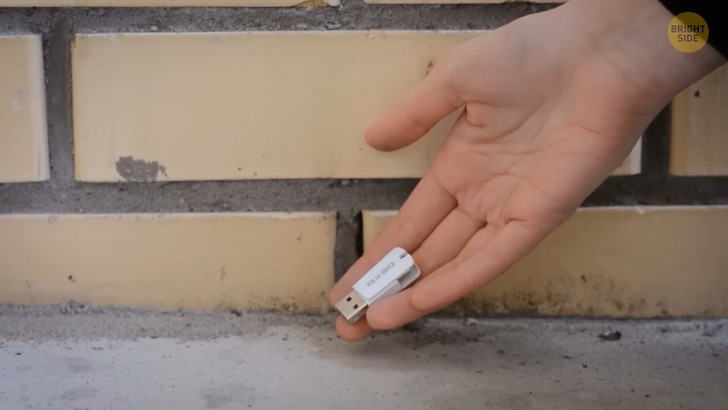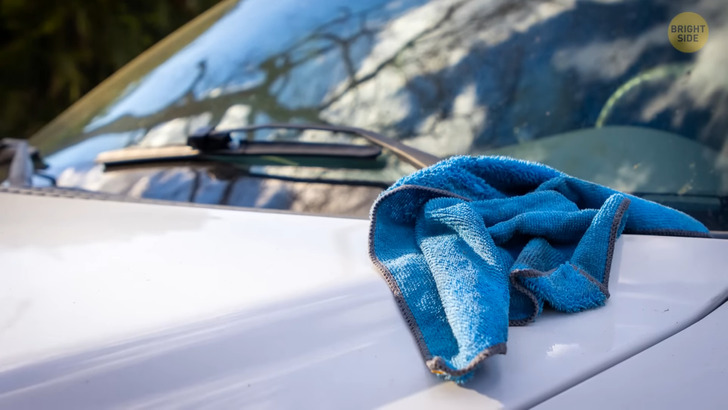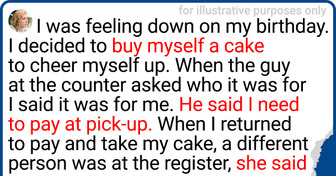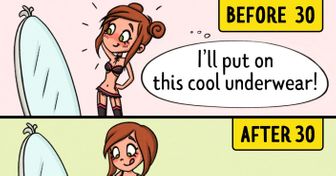25 Photographs That Go Straight to Your Heart

You’ve probably heard that when a burglar decides which house to target, they start by “casing” it. This means that they watch the owners, find out information about their routine, and determine the best time for entering their home. By the time they are ready to commit the crime, they already know for sure when there won’t be anybody inside or when the owners will be distracted.
One of the tricks thieves use to gather information about your routine is so simple that you may not even give it a second thought. But the next time you hear a quiet crackle under the sole of your shoe, stop and check what it was. The chances are high that you’ll find yourself face-to-face with a crushed cookie. If that’s the case, it’s your clue that something has gone terribly wrong.

The thing is, this is a rather effective tool criminal use to find out if you’ve left on a trip or when exactly you come home in the evening. A cookie is such an innocent object that people don’t usually give it much thought — if they even notice it at all. You arrive home, step on the cookie, make it crumble, and automatically reveal all your secrets to burglars. They know for sure if the house is lived in and can also figure out the schedule of its owners.
Things get even worse if you’re away from home. The cookie under the doormat remains whole, thus alerting criminals that the house is perfect for a break-in. So if you find some treats under your doormat, that’s pretty bad news: somebody is interested in your house and watching it. It might be a good idea to notify the police or take some safety measures.
The ploy with a cookie is just one of the numerous tricks used by burglars. One more sign that can alert you of the fact that you’re being watched is white pebbles left near the house or in the driveway. This means that a criminal has already visited your home and marked it as worth entering. Another reason why thieves may have left the pebbles is to indicate that your house stays empty during the day.

So, if you’re walking along the street and notice a USB flash drive sticking out of a curb or a wall, don’t get confused. You have most likely stumbled across a Dead Drop. Despite its ominous name, this is a global art project that has borrowed some tricks from the world of spies and espionage. Lots of people who know about this project are happy to be able to put on their black coats and dark sunglasses and go to swap confidential information with others.
The thing is that many decades ago, spies had their own ways to exchange secret materials. There was a “live drop” when spies met in person. But this was often extremely dangerous. That’s why a “dead drop” system was invented. In this case, some loose bricks in a wall in an alleyway hid important documents that had to be picked up later.

Nowadays, there are more than one and a half thousand dead drops all over the world. And the accumulated data on these flash drives reach 10 terabytes! You can come across a dead drop on any continent you visit (except Antarctica, maybe because there are not so many walls there?). So if you find one, what do you do with it?
First of all, it’s highly inadvisable to connect random USB flash drives to your computer! You never know what viruses are lurking there looking forward to destroying your hard drive content. And while risk is a part of the game, don’t overdo it! If you’re 100 percent sure that you want to play, secure your computer as well as you can (or even better).
Secondly, you can’t even guess what information will be waiting for you on a flash drive. Anyone can download videos, photos, or text files, and this has already led to several problems.

Speaking of which — have you got a parcel with a USB stick in it? Whatever you decide to do with it, don’t plug the flash drive in! Such cases have been more and more frequent in Australia. The police warn people that hackers have invented a new tactic.
They drop unmarked memory sticks into letterboxes. It will probably come as no surprise that these devices contain malware able to mess up your computer. They evidently rely on human curiosity and, in all honesty, it pays off.
People can’t fight an inexplicable desire to check the content of a mysterious gift. As a result, almost half of USB sticks received by post get plugged in. After that, people start having serious problems with their laptops and computers. For example, fraudulent media begins to stream service offers. Or computer viruses harm files and programs on a PC. So, no touching the free flash drive, okay?

You leave a shopping mall/your office/an airport and go to the parking lot to find your car. You unlock it and put the key in the ignition. When you’re about to start your vehicle and drive away, you see something strange on your windshield.
Is that a $100 bill wrapped around your wiper? Oh, you could certainly find a way to spend this unexpected gift! But do you really think somebody accidentally put money on your windshield and forgot all about it? Beware! This is nothing but a ruse.
As soon as you get out of your car to get a closer look at this mysterious banknote, the owner of the banknote will take action. They will get into your car and drive off at record-breaking speed. Let’s admit that no one would turn off their ignition and take their belongings with them if they got out of their car to check the windshield for a C note. As a result, in under a minute, you’ll lose your car, your wallet, and your documents, and you’ll be left stranded in the parking lot.

People have recently started to find some items of clothing, like a shirt, for instance, lying on their windshield or wrapped up in their wipers. If you ever happen to be one of these people, don’t fall into this trap, and don’t try to remove the object. Just get in your car and drive away as fast as you can from the place you were parked. This seemingly misplaced garment is actually a new con being used by muggers and thieves.
It works like this: if you see some random piece of clothing that prevents your wipers from moving or obscures your view, your first reaction will be to remove it, of course. But while you’re distracted untying it or trying to get it off, the criminal has plenty of time to jump you. The most common place for this sort of scam is parking garages. They’re usually badly lit and pretty deserted, which means there are few witnesses around and plenty of dark spaces for the attacker to lie in wait.

If one day you come home and notice some graffiti or markings on your door or house, call the police immediately! Even if it just looks like a teenage prank or a simple scratch, it’s better to be safe than sorry because burglars use certain marks to tell other criminals different things about your home. For example, something resembling the Roman numeral “two” means that the homeowners are rich, so the place is a great target. On the other hand, a crossed circle tells other burglars that there’s nothing valuable to take from the house.
Now, a long horizontal rectangle divided into 4 parts means the place has a big aggressive guard dog. A triangle divided into two parts by a vertical line tells criminals to hit the place only at night, while a reversed one says that a house or apartment is free after dinner. And something looking like a combined “A” and “K” lets their fellow burglars know that the house is always full of people. Did you know there’s even a fraternity for burglars who love to steal desserts named: Iota Grabba Pi? Sorry, I made that up.

A new trick is being used by car thieves. And that’s the trick with a coin. They slip it into the space between the door and the door handle. When a car owner thinks that they’ve locked the door with their remote, the vehicle is, in fact, still open. The coin prevents the lock on one of the doors from working. As soon as the owner walks away from the car, the thief has no problems at all opening the door and driving away.
Another trick. As soon as there’s some public gathering, a big party, or even a busy day at the mall, car thieves make an announcement over the PA system that a particular car (chosen by them, of course) has blocked their vehicle in, and they can’t leave. As soon as the owner comes out to move his car, a group of guys starts to act. They assume (and for good reason) that the person is carrying the key to his car.











